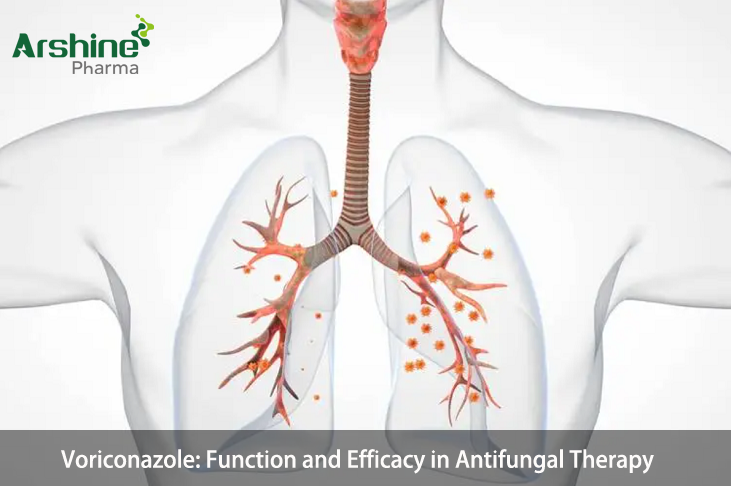
what is voriconazole: Voriconazole is a potent antifungal medication that has revolutionized the treatment landscape for various invasive fungal infections. As a triazole antifungal agent, voriconazole belongs to the second-generation class of azole antifungals and stands out for its broad-spectrum activity against a wide range of fungal pathogens. This article delves into the multifaceted function and remarkable efficacy of voriconazole in the realm of antifungal therapy.
Mechanism of Action: Voriconazole's efficacy hinges on its unique mechanism of action, which revolves around its inhibition of fungal cytochrome P450-dependent 14α-lanosterol demethylase. This enzyme is pivotal in the synthesis of ergosterol, a key component of fungal cell membranes. By disrupting ergosterol synthesis, voriconazole undermines fungal membrane integrity, resulting in increased permeability and subsequent cell death. This targeted action ensures that voriconazole selectively targets fungal cells while sparing human cells, thus minimizing adverse effects.
Spectrum of Activity: One of the hallmarks of voriconazole is its broad-spectrum antifungal activity. It effectively combats an array of fungal species, encompassing both yeasts and molds. Voriconazole demonstrates notable potency against Candida species, including the frequently encountered Candida albicans, as well as non-albicans Candida species that might exhibit resistance to other antifungals. Additionally, voriconazole is efficacious against various molds like Aspergillus species, which are notorious for causing life-threatening infections in immunocompromised individuals.
Clinical Applications: Voriconazole's clinical applications span a wide spectrum of fungal infections, making it a versatile tool in antifungal therapy. It is the treatment of choice for invasive aspergillosis, a condition notoriously difficult to manage due to increasing antifungal resistance. Voriconazole's effectiveness in this context is underscored by improved patient outcomes and reduced mortality rates. Furthermore, it is employed in cases of candidemia, esophageal candidiasis, and other serious fungal infections.
Pharmacokinetics: The pharmacokinetic profile of voriconazole is characterized by oral and intravenous formulations, offering flexibility in administration. Oral voriconazole is well-absorbed, enabling patients to transition from intravenous to oral therapy seamlessly. This adaptability enhances patient compliance and allows for outpatient management in less severe cases. Voriconazole's bioavailability is influenced by food intake, with optimal absorption achieved on an empty stomach. Importantly, its pharmacokinetics display inter-individual variability, necessitating therapeutic drug monitoring to ensure optimal dosing and minimize the risk of adverse effects.
Efficacy and Clinical Studies: Multiple clinical trials have attested to voriconazole's efficacy in treating invasive fungal infections. The VORICONAZOLE INVASIVE ASPERGILLOSIS STUDY (VISA) demonstrated improved response rates and survival in patients treated with voriconazole compared to conventional therapy. Moreover, voriconazole exhibited non-inferiority to amphotericin B in the treatment of invasive aspergillosis. Studies have consistently shown that voriconazole achieves higher rates of successful clinical response and better overall survival in patients with fungal infections.
Adverse Effects and Monitoring: While voriconazole is generally well-tolerated, it can elicit adverse effects that range from mild to severe. Common side effects encompass visual disturbances, hepatotoxicity, and gastrointestinal disturbances. Visual disturbances include photophobia, color perception changes, and blurred vision, which are often reversible upon discontinuation. Hepatic function monitoring is imperative due to potential hepatotoxicity. Therapeutic drug monitoring aids in optimizing dosing, preventing adverse effects, and ensuring therapeutic efficacy.
Conclusion: Voriconazole's multifaceted function and exceptional efficacy have solidified its role as a cornerstone in antifungal therapy. Its unique mechanism of action, coupled with its broad spectrum of activity, renders it indispensable in the treatment of various invasive fungal infections. By advancing patient outcomes and survival rates, voriconazole has substantially improved the prognosis for individuals battling these often life-threatening conditions. As research continues, voriconazole's role in antifungal therapy is poised to evolve, further enhancing its contribution to patient care.
